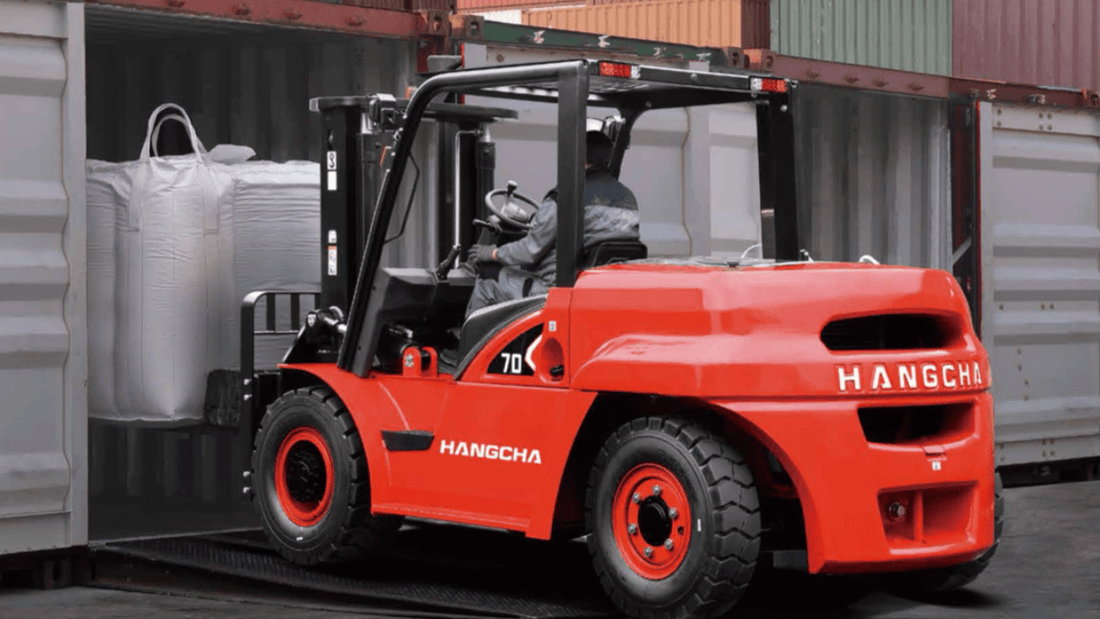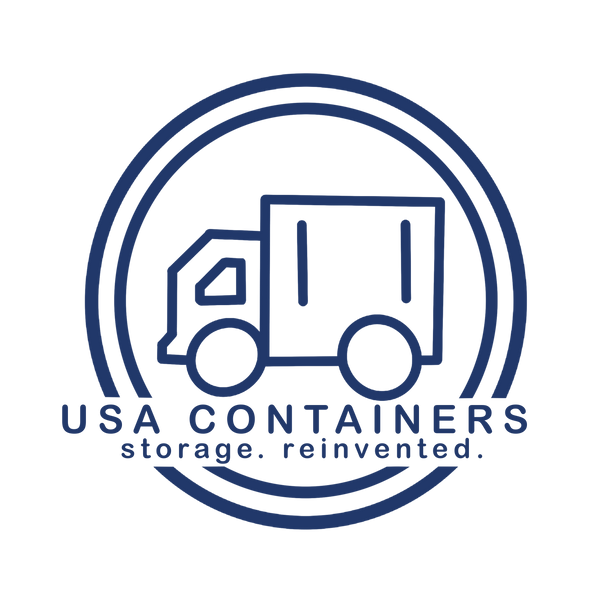
Can I Drive a Forklift Into a Shipping Container?
Share
There are several important factors that determine whether driving a forklift into a shipping container is a safe and practical move. Let’s take a closer look at when it makes sense and when it might be smarter to find another solution.
Clearance and Access
The first thing to consider is how high the container sits off the ground. Standard shipping containers usually rest about six to eight inches above grade. On top of that, there’s a steel door sill at the entrance that sticks up even higher. That step alone is enough to make forklift entry tricky unless you have the right equipment in place.
To safely bridge that gap, you’ll need a heavy-duty shipping container ramp. These ramps are made to handle the weight of forklifts and create a smooth transition between the ground and the container floor. Avoid using makeshift ramps like plywood or loose boards. They may look solid, but they’re not designed for this kind of stress and could collapse or slip under load.
Can the Shipping Container Handle the Weight?
Shipping containers are tough, but they do have their limits. Most containers have floors made of thick marine-grade plywood laid over steel cross members. They’re built to support stacked cargo, not necessarily the point load of a forklift’s tires. The weight distribution of a moving forklift is very different from a stationary load.
Light electric pallet jacks or container spec forklifts usually fall within the safe range. But larger forklifts, especially when carrying heavy items, can exceed the floor’s load capacity. Driving that kind of weight inside may crack the wood, bend the supports, or compromise the container’s structure.
Check your forklift’s gross weight when loaded, then compare it to the container’s floor rating. This information is often listed in pounds per square foot or kilograms per square meter. If you’re not sure, ask your shipping container supplier before taking the risk.
Find out more about the best kind of forklift to use inside a shipping container
Measuring for Fit
Height is another key issue. The standard interior height of a shipping container is around seven feet ten inches. High cube units add a foot, giving you more breathing room. But the real challenge often comes at the door opening. The structural beam across the top lowers the clearance, which can prevent some forklifts from entering without tilting the mast or lowering protective guards.
Before trying to drive in, measure your forklift’s total height—including the overhead guard. You also want to check the mast clearance while carrying a load. Even if the forklift fits when empty, you could run into trouble once it’s loaded.
Maneuvering Inside the Shipping Container
Once you’re inside the shipping container, space is limited. Forklifts are not known for having a tight turning radius, and container interiors are narrow. A standard shipping container is only about seven feet eight inches wide on the inside, so there’s very little room to reposition or adjust. Visibility is also reduced, especially if you’re carrying oversized items.
Trying to line up pallets or stack goods with precision inside that space can be frustrating, slow, and risky. Operators need to be extremely careful to avoid hitting the walls or damaging the container’s floor.
Some operations use side-loaders or specialized narrow-aisle forklifts to work in these tight spaces, but most stick to using a different method altogether.
Alternatives That Make Sense
In many cases, the best choice is to avoid driving the forklift inside altogether. There are several efficient ways to load and unload containers without putting equipment or cargo at risk.
-
Use the threshold: Drive the forklift to the entrance of the shipping container, then use a pallet jack to place the load inside.
-
Dock it: If you’re loading from a raised dock, you may be able to line up the container perfectly with the platform, eliminating the need for a ramp.
-
Roller systems: Some companies install rollers inside the shipping container to make it easier to push or pull pallets into place without lifting.
-
Skate or sled systems: For especially heavy or delicate cargo, loading it onto a low-friction surface allows you to slide it in without any wheels at all.
These approaches reduce wear on your container, eliminate clearance issues, and keep your forklift on flat, safe ground.
What to Check Before You Use a Forklift in Your Shipping Container
If you still want to drive a forklift into your shipping container, here’s a quick checklist to make sure you’re set up for success:
-
Do you have a heavy-duty ramp rated for the full weight of the forklift and load?
-
Is your forklift short enough to fit through the door opening?
-
Can the shipping container’s floor handle the weight?
-
Do you have enough visibility and space to operate safely inside?
-
Is the container sitting level and secure on firm ground?
If you can confidently answer yes to all of the above, then you’re probably good to go. Just make sure your operators are trained and aware of the risks.
Driving a forklift into a shipping container is possible, but it’s not always the most efficient or safest option. If the equipment fits, the shipping container is rated for the load, and you have the right ramp in place, it can work well for certain jobs. But in many situations, using a pallet jack or another loading method will get the job done faster and with less risk to your gear and cargo.
Always evaluate the setup before making a move. It might take a few extra minutes to load safely, but that’s nothing compared to the time and cost of dealing with damage or injuries.
Fill out the form below for a free shipping container quote from USA Containers:
